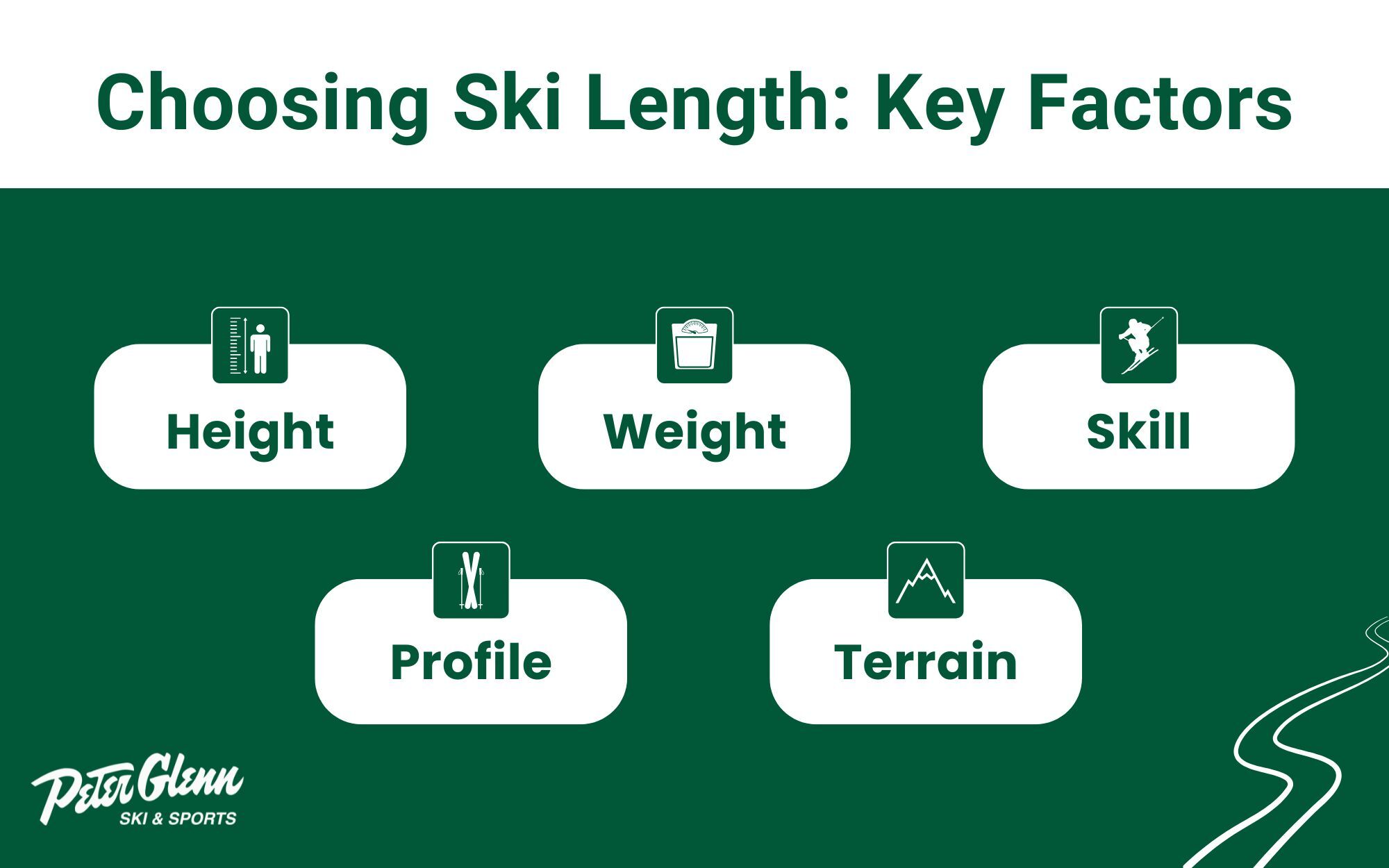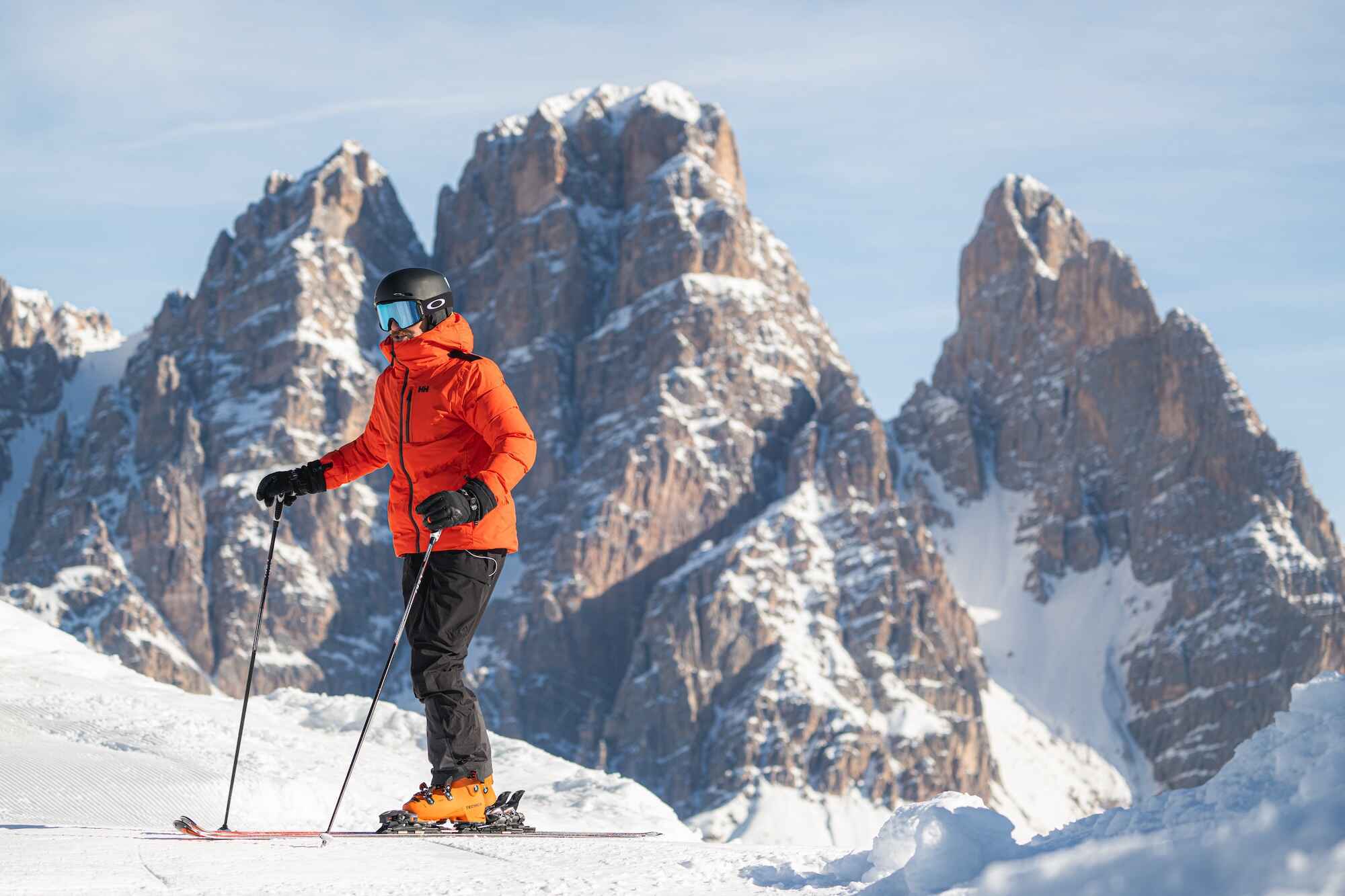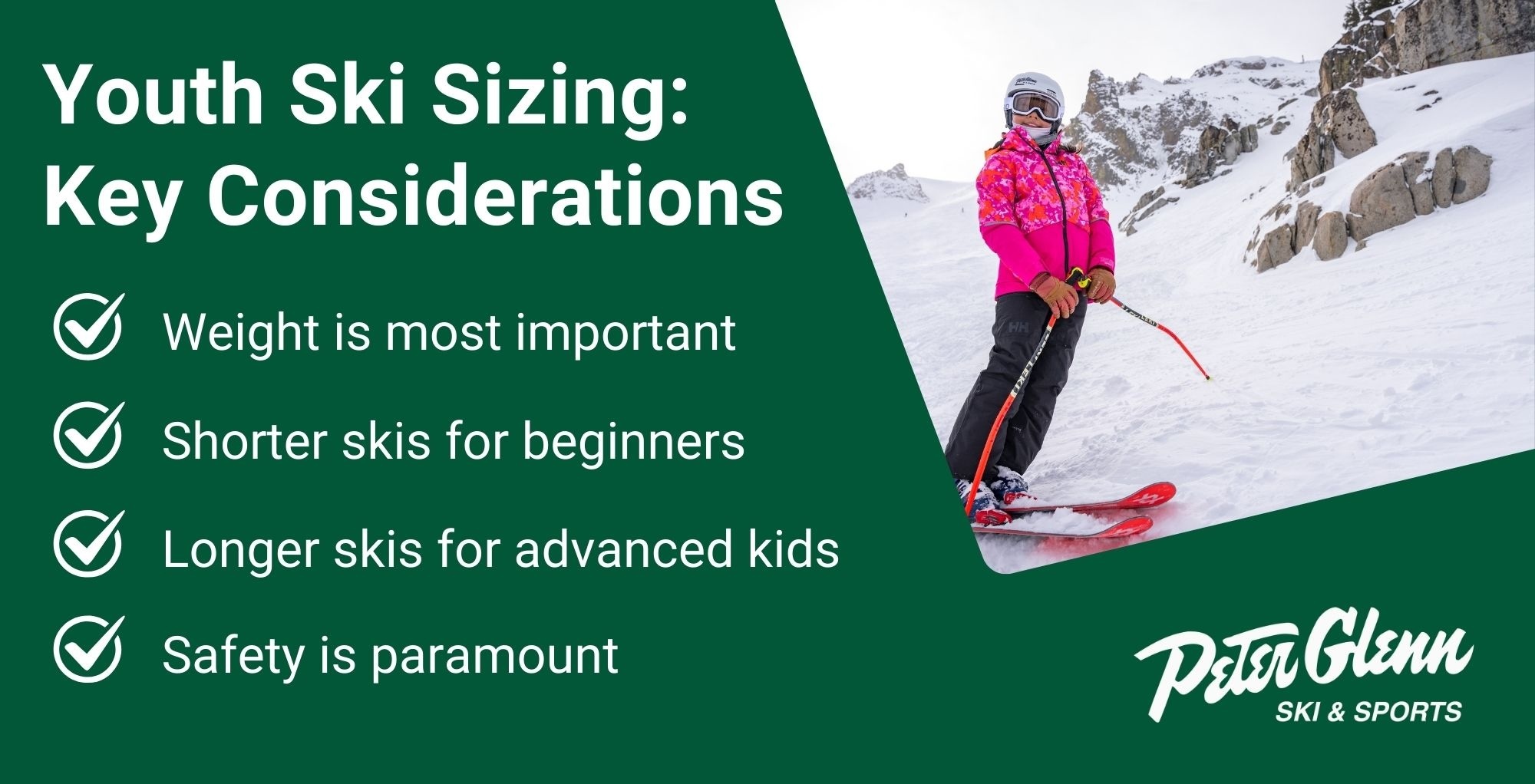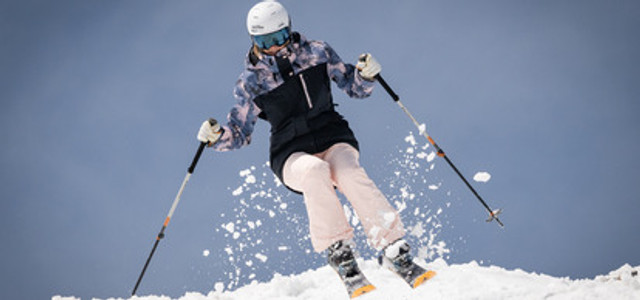How Tall Should Skis Be?
Posted by Peter Glenn Staff on Sep 22nd 2025
Table of Contents:
The Short Answer: Ski length depends on multiple factors, but generally, skis should reach between your chin and the top of your head when standing upright. This simple guideline helps most skiers find a starting point for their ideal ski size.
Choosing the right ski length is crucial for your mountain performance and safety. The correct ski size impacts everything from your control and stability to overall enjoyment on the slopes. Too short, and you'll lack stability at higher speeds. Too long, and you'll struggle to make quick turns and control your movement.
Ski length isn't a one-size-fits-all decision. Your height, weight, skill level, and skiing style all play critical roles in selecting the perfect pair of skis. Experienced skiers understand that the right ski can transform a good day on the mountain into an exceptional one.
Key Factors Influencing Ski Length
Height and Weight: The Foundation of Ski Sizing
Your height and weight are the primary starting points for selecting the right ski length. Most ski manufacturers provide sizing charts that directly correlate ski length to these two fundamental measurements.
Height-Based Sizing
|
Skier Height (in) |
Skier Height (cm) |
Suggested Ski Length (cm) |
|
4’8” |
142 |
130–145 |
|
4’10” |
147 |
135–155 |
|
5’0” |
152 |
140–160 |
|
5’2” |
158 |
145–165 |
|
5’4” |
163 |
150–170 |
|
5’6” |
168 |
155–175 |
|
5’8” |
173 |
160–180 |
|
5’10” |
178 |
165–185 |
|
6’0” |
183 |
170–190 |
|
6’2” |
188 |
175–195 |
|
6’4” |
193 |
180+ |
Weight Considerations
- Lighter skiers need shorter skis for better control and maneuverability
- Heavier skiers benefit from longer skis that provide more stability
- Weight impacts ski flex and performance more than height alone

Beyond Basic Measurements: A Comprehensive Approach
While height and weight provide an initial guideline, several additional factors refine your ski length selection.
Skill Level Impacts Sizing
Ski length varies significantly based on a skier's ability level. Beginner skiers typically benefit from shorter skis that offer more control and easier maneuverability. As skiers progress to an intermediate level, they seek a balance between control and performance, often choosing skis that provide more stability while maintaining responsiveness. Advanced skiers can handle longer skis with more complex characteristics, utilizing the additional length to maintain speed and control in challenging terrain.
Ski Profile: Rocker vs. Camber
The ski's design significantly influences length selection:
Camber skis: Traditional design with an arched middle, providing excellent edge control
Rocker skis: Upturned tips that improve float in powder and ease of turning
Hybrid profiles: Combine camber and rocker for versatile performance
Terrain and Skiing Style
Your preferred mountain terrain further refines ski length selection:
Groomed runs: Shorter skis offer more responsive turns
Powder and off-trail skiing: Longer skis provide better float and stability
Tight terrain: Shorter skis navigate trees and moguls more easily
Universal Principles of Ski Sizing
Ski length is not a simple mathematical equation but a nuanced decision that impacts your entire experience. Longer skis provide more stability at high speeds, making them ideal for aggressive skiers and those who enjoy carving wide turns on open slopes. Conversely, shorter skis offer increased maneuverability, allowing for quicker turns and more precise control in challenging terrain. The ultimate goal is finding the right length that balances control, stability, and enjoyment, creating a seamless connection between skier and ski.
When to Choose Shorter or Longer Skis

When Might You Need Shorter Skis?
Shorter skis are the right choice in several specific situations:
- Beginner skiers looking for more control and easier learning
- Lighter weight skiers who need more manageable equipment
- Skiers who primarily ride on groomed runs and piste ski
- Those who prefer carving skis and making quick, precise turns
- Skiing in tight terrain like trees and moguls
- Intermediate skiers building confidence on the mountain
- Skiers with limited experience navigating challenging snow conditions
- People with smaller body frames
- Those who prioritize maneuverability over speed
When Might You Need Longer Skis?
Consider longer skis in these scenarios:
- Advanced or aggressive skiers seeking more stability
- Heavier weight skiers who need more ski surface
- Skiers who frequently ride at higher speeds
- Those who spend time in off-trail or powder skiing
- Backcountry ski enthusiasts
- Skiers with significant rocker profile on their skis
- People who prefer long, sweeping turns
- Those skiing on wide, open terrain
- Experienced skiers comfortable with more challenging equipment
- Riders looking for better float in deep snow
Matching Ski Length to Your Style
The art of ski sizing goes beyond simple measurements. It's about finding the perfect balance between your physical characteristics and skiing style. An advanced skier with a rockered ski profile might size differently compared to a beginner on a traditional camber ski.
Key Considerations for Ski Length
Your ideal ski length depends on several critical factors:
- Weight matters more than height
- Skill level significantly impacts ski length
- Terrain type influences the best ski size
- Personal comfort is the ultimate deciding factor
Make sure to take these considerations into account when choosing the appropriate size skis.
Kids' Ski Sizing: Getting it Right

The Basics of Choosing Skis for Children
Selecting the right ski size for children requires a careful approach that prioritizes safety, comfort, and skill development. The general rule of thumb is that kids' skis should reach between their chest and nose when standing upright, but the reality of ski sizing is more nuanced. Different age groups and skill levels demand unique considerations.
Navigating Ski Sizing for Young Skiers
Young skiers progress through distinct stages of skiing ability, and their ski length should reflect their current skills and potential growth. Younger children who are just starting benefit from shorter skis that provide maximum control and build confidence. As kids develop their skills, their ski length can gradually increase to match their growing abilities.
Key Considerations for Kids' Ski Length
When selecting skis for children, parents should consider these critical factors:
- Weight is more important than height when choosing ski length
- Lighter or less experienced kids perform better on shorter skis
- Advanced children can handle longer skis with more stability
- Safety should always be the primary concern
Safety and Skill Development
Professional ski instructors emphasize the importance of proper ski sizing. Skis that are too long can overwhelm a young skier, making it difficult to control turns and maintain balance. Conversely, skis that are too short may not provide enough stability as the child's skills improve. The goal is to find a ski length that challenges the child without creating frustration or safety risks.
Growing with the Right Equipment
Parents should view ski equipment as an investment in their child's skiing journey. While it might be tempting to buy skis that a child can "grow into," this approach can hinder skill development and potentially discourage young skiers. Regular assessments with a professional ski shop can help ensure the right fit at each stage of a child's skiing progression.
Ski Poles and Additional Considerations
For younger skiers, ski poles are often unnecessary and can actually impede learning. Children under 7-8 typically develop better skiing techniques by focusing on balance and movement without the added complexity of poles. As skills improve, poles can be introduced to enhance technique and provide additional support on the mountain.
Gear Up for Ski Season at Peter Glenn
Choosing the right ski length is just the first step in prepping for your next ski trip. Peter Glenn takes the guesswork out of ski selection with expert guidance and an unmatched selection of top-quality ski gear. Our knowledgeable staff understands that every skier is unique, whether you're a first-time beginner or a seasoned pro.
Don't just buy new skis. Get the right skis. Shop skis, jackets, boots, and more at Peter Glenn today and gear up for an incredible ski season!



